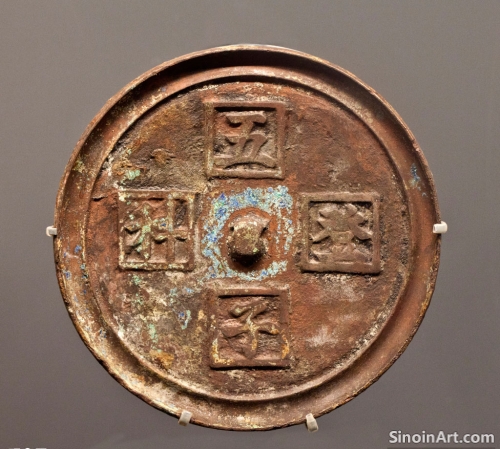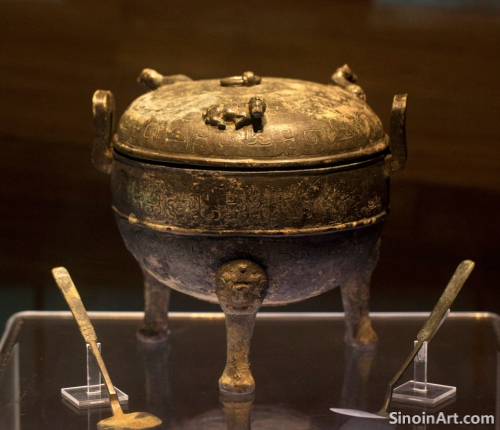The Evolution of Bronze Vessel Forms in Ancient China: From Simplicity to Complexity and Back Again
|
The forms of ancient Chinese bronze vessels underwent a significant evolution over time, reflecting changes in ritual practices, technological capabilities, and aesthetic preferences. The development of vessel forms highlights the dynamic and changing nature of ancient Chinese art. The forms and shapes of these vessels are often reflective of the time and the culture that produced them. The history of bronze vessels is a history of cultural and artistic evolution.  Early bronze vessels were often simple in form, with clean lines, basic geometric patterns, and functional designs. These early vessels often reflected the basic needs of the time and the limitations of early bronze working techniques. As techniques advanced, the forms and designs became more intricate and elaborate.  During the Shang and Zhou dynasties, bronze vessels became more complex, with a variety of new forms, decorative motifs, and symbolic designs being developed for different ritual and ceremonial practices. The peak of bronze working techniques and artistic styles can be seen in many of the objects from this period.  Later periods often saw a move back towards simpler forms, reflecting a change in both artistic taste and cultural practices, as well as the influence of new technologies and approaches. The evolution of bronze vessel styles is a testament to the dynamic and evolving nature of ancient Chinese art. The study of bronze vessel forms provides a unique window into the history of ancient Chinese art, highlighting the complex interplay between functionality, symbolism, and creative expression. The careful study of these forms helps to illuminate the ways that culture and tradition have influenced artistic expression throughout Chinese history. |
Tag : bronze vessel forms, Chinese art evolution, ritual objects, design history, ancient pottery
Related information
- Unveiling Ancient China: An Introduction to Chinese Bronze Ware
- Bronze Ware and the Development of Ancient Chinese Technology: Innovation and Practical Applications
- Regional Variations in Chinese Bronze Ware: Exploring Cultural Diversity
- The Impact of Bronze Ware on Ancient Chinese Burial Customs: Ritual Objects and the Afterlife Journey
- Bronze Ware and Ancient Chinese Astronomy: Celestial Charts and Observational Tools
This article provides an introduction to Chinese bronze ware, exploring their creation, functions, cultural significance, and their enduring legacy as symbols of ancient China’s artistry and technological achievement.
This article explores the role of bronze in the development of ancient Chinese technology, highlighting its use in agriculture, irrigation, and warfare, and demonstrating how the material enhanced practical and technical capabilities.
This article explores the regional variations in Chinese bronze ware, highlighting how different regions developed their unique styles, forms, and techniques, reflecting the diverse cultural landscape of ancient China.
This article explores the impact of bronze ware on ancient Chinese burial customs, highlighting their role as grave goods, their connection to beliefs about the afterlife, and how they reflect the status and spiritual needs of the deceased.
This article explores the use of bronze in ancient Chinese astronomy, focusing on the creation of armillary spheres, sundials, and other observational tools, demonstrating the integration of art, technology, and the ancient quest to understand the cosmos.